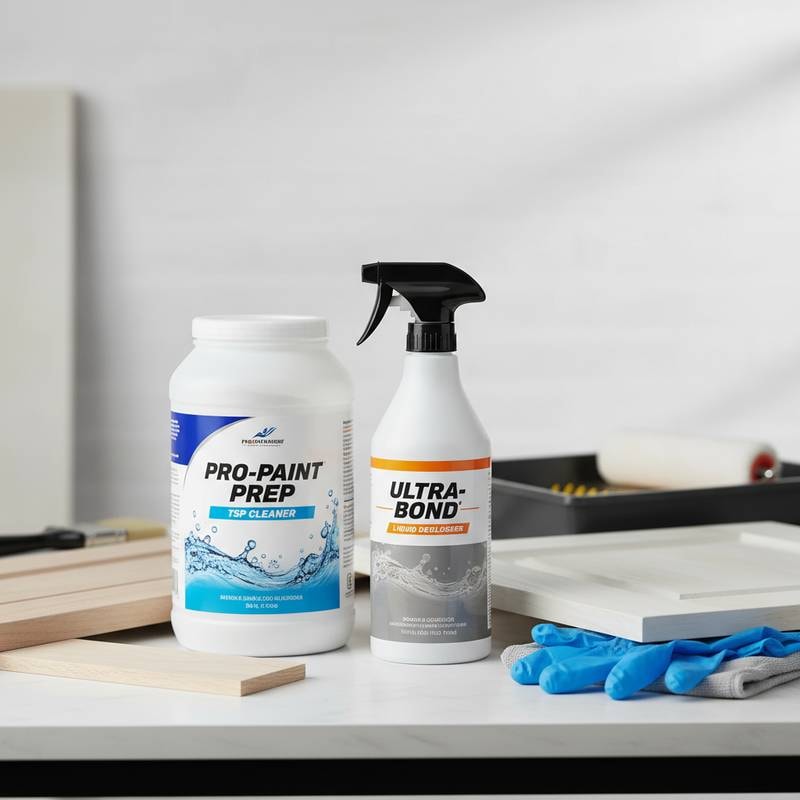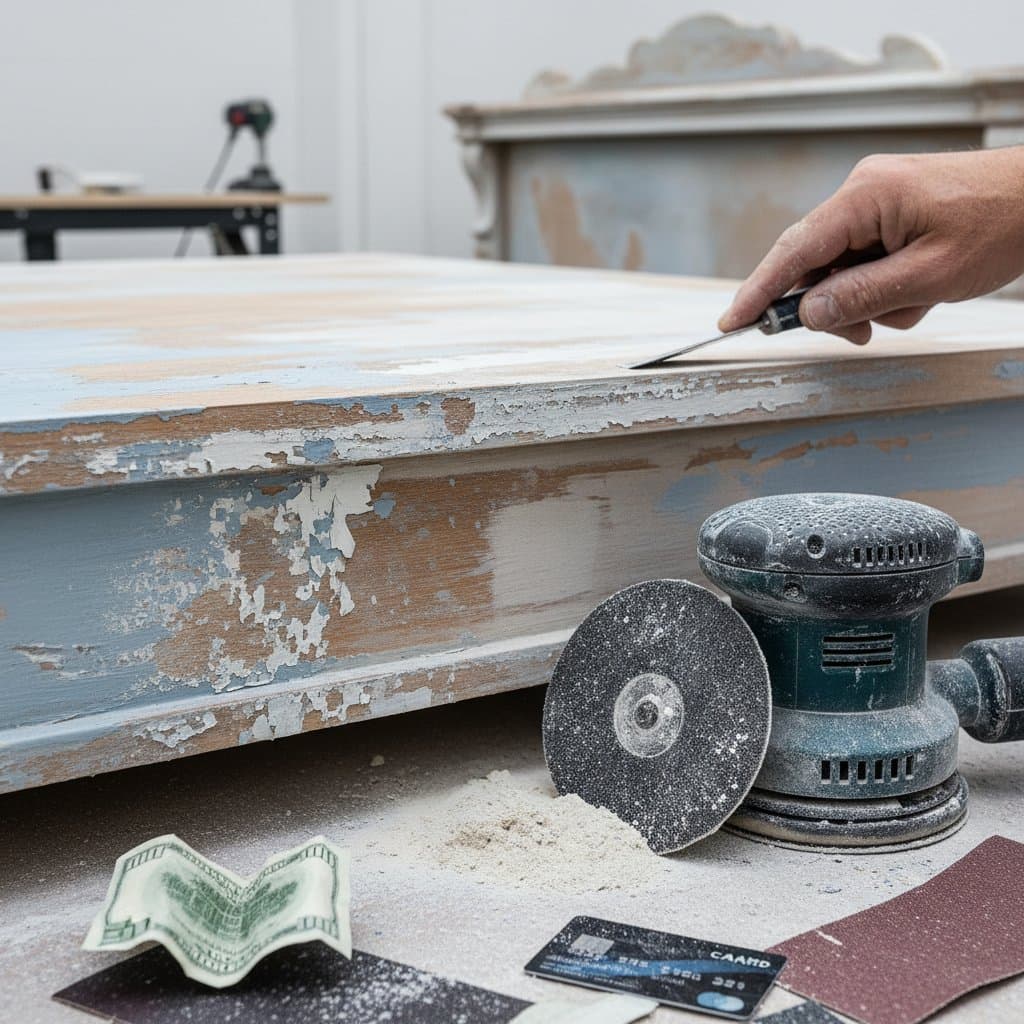Reduce Prep Time by Half: TSP or Liquid Deglosser?
Surface preparation represents the most time-intensive phase of any painting project. Homeowners seek professional-quality outcomes without dedicating days to scrubbing, sanding, and rinsing walls or woodwork. Two essential products streamline this process: trisodium phosphate (TSP) and liquid deglosser. Each prepares surfaces for paint application through distinct mechanisms. Selecting the appropriate option can significantly shorten preparation duration while guaranteeing a robust, professional finish.
This article details the functions of each product, identifies optimal usage scenarios, and provides guidance on determining which choice best suits a given project to maximize time savings.
Key Differences in Functionality
| Feature | TSP Cleaner | Liquid Deglosser |
|---|---|---|
| Primary Purpose | Eliminates dirt, grease, and residue | Reduces gloss on surfaces for adhesion |
| Rinsing Required | Yes | No |
| Surface Type | Ideal for soiled or greasy areas | Suited for glossy or sealed finishes |
| Ease of Use | Involves mixing and thorough rinsing | Features straightforward wipe-on method |
| Dry Time | Requires complete drying post-rinse | Dries rapidly, often in minutes |
| Safety Notes | May irritate skin and eyes; gloves mandatory | Produces fumes; ventilation essential |
Both enhance paint adhesion, yet they target specific challenges. TSP excels at removing contaminants like grease. Liquid deglosser proves superior for clean but shiny surfaces, offering greater time efficiency.
Variations in Preparation Duration
Applying TSP typically spans several hours, encompassing scrubbing, rinsing, and drying stages. Liquid deglosser halves this timeline by bypassing rinsing and achieving quick evaporation.
Consider a kitchen cabinet refurbishment:
- TSP treatment demands 3 to 4 hours from initial application to readiness for painting.
- Deglosser application requires only 1 to 2 hours for the same scope.
Integrating both—TSP for initial cleaning followed by deglosser for gloss reduction—yields optimal adhesion in demanding locations such as kitchens or bathrooms.
Applications for Professionals and DIY Enthusiasts
Scenarios Favoring TSP
- Surfaces impacted by cooking oils, tobacco residue, or frequent handling.
- Walls or trim exhibiting powdery buildup or mold discoloration.
- Projects where users possess experience with chemical mixing and post-application rinsing.
Scenarios Favoring Liquid Deglosser
- Clean painted or varnished elements with persistent shine.
- Furniture restoration efforts where sanding risks altering contours.
- Schedules demanding rapid completion or extensive surface coverage.
Most DIY projects benefit from sequential use of both products to balance thoroughness and efficiency. Professionals routinely employ TSP for decontamination, followed by deglosser prior to priming, ensuring enduring performance.
Safety and Environmental Factors
Handle both products with caution to mitigate risks. TSP poses potential irritation to skin and eyes, necessitating protective gloves and eyewear. Phosphate discharge harms aquatic ecosystems, prompting the development of phosphate-free alternatives suitable for residential applications. Liquid deglosser releases volatile fumes, requiring ample airflow and respiratory protection during use. Review product instructions meticulously and conduct tests on inconspicuous areas prior to widespread application.
Manage waste appropriately. Avoid directing TSP rinse water toward drains or ground absorption. Permit deglosser-saturated rags to air-dry fully before disposal to avert spontaneous combustion hazards.
Selecting the Right Product
- Examine surface state. Proceed with TSP if stickiness, grease, or dust predominates.
- Inspect for gloss. Apply deglosser to glossy or semi-gloss coatings to promote bonding.
- Factor in time constraints. Opt for deglosser when expediency takes priority.
- Account for ecological impact. Choose phosphate-free TSP variants or low-VOC deglossers for reduced environmental footprint options.
- Incorporate both as needed. Dual application ensures comprehensive cleanliness and paint receptivity.
Insights from Professional Services
Experienced painters adapt TSP and deglosser based on project specifics. When engaging a contractor, inquire about their preparation protocols and rationale. Reputable experts articulate their methodology, detailing preferred products and adherence to safety standards.
Essential Steps for Project Success
Begin by gathering supplies: gloves, ventilation equipment, and application tools like sponges or lint-free cloths. Clear the workspace to facilitate access and minimize contamination. After preparation, apply primer promptly to capitalize on the treated surface. Monitor humidity levels to accelerate drying and prevent adhesion issues. These measures transform routine prep into an efficient foundation for superior paint longevity.
Frequently Asked Questions
1. What budget should one allocate for painting surface preparation?
Small-scale DIY endeavors typically require $10 to $40 in materials for cleaning and deglossing. Contractors incorporate preparation expenses into comprehensive quotes, which fluctuate according to area dimensions and existing conditions.
2. What interval follows TSP use before paint application?
Post-rinsing, allow surfaces to dry thoroughly. Air circulation and ambient humidity influence this period, often extending to several hours. Premature painting risks moisture entrapment, resulting in adhesion failure or surface defects.
3. Is it advisable to omit TSP when employing deglosser?
Neglecting TSP on grimy or oily surfaces invites paint peeling or bubbling. Deglosser lacks efficacy against contaminants, underscoring the value of prior cleaning for optimal outcomes.
4. Under what circumstances should one hire a professional painter?
Engage experts for expansive areas, elevated work involving ladders, or projects necessitating layered coatings. Professionals manage preparation precision, safety protocols, and post-task cleanup with proficiency.
5. Does combining TSP and deglosser extend paint durability?
Affirmative. TSP eradicates impurities, while deglosser enhances bonding. This tandem approach prepares an exemplary base for primer and topcoats, prolonging finish integrity and reducing maintenance needs.
6. Exist safer or more sustainable substitutes for TSP and deglosser?
Indeed. Phosphate-free TSP equivalents and low-VOC deglossers minimize ecological harm without compromising cleaning power or adhesion strength.



